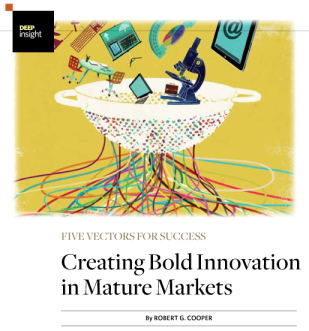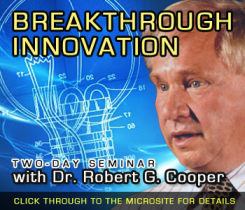
For most companies, innovation is a relentless pursuit, forever in the chase but rarely crossing the finish line. Many are currently finding they’ve reached a ceiling on improving their products and services that can’t be solved with anything less than a reboot. Clever companies are instead discovering ways to change the game completely by reinventing the entire business model to grow and expand their market and change the economics more in their favor.
Many mistakenly judge this approach to be too time consuming or too large of a problem to swallow. However, there are approaches and tools to make business model innovation a manageable and worthwhile endeavor. Today, most product developers are well aware of the “disruptive innovation” approach that highlights lucrative opportunities, while the recent “Lean Startup” movement has fueled numerous entrepreneurs to use relentless experimentation as a key ingredient to quickly and effectively capture new markets.
 Another increasing development is the era of partnerships and co-development. Businesses exist in markets that are increasingly referred to as “ecosystems” where aligned companies collaborate to combine strengths and create a more robust market that can better meet customer needs. Whether you need a technology, a manufacturing capability or a service infrastructure, the right partner can create market leverage that is unattainable separately and can provide unique value that wins on customer choice.
Another increasing development is the era of partnerships and co-development. Businesses exist in markets that are increasingly referred to as “ecosystems” where aligned companies collaborate to combine strengths and create a more robust market that can better meet customer needs. Whether you need a technology, a manufacturing capability or a service infrastructure, the right partner can create market leverage that is unattainable separately and can provide unique value that wins on customer choice.
Management Roundtable has partnered with Michael Docherty of Venture2, Inc., on a new workshop designed to help companies who need a plan for developing new business models to achieve growth goals and ensure long-term profitability. Docherty brings many years of hands on experience in both the corporate and entrepreneurial arenas and has helped develop numerous business models for companies and clients. He has developed some very helpful tools and processes for leading executives on how to uncover and tackle the best business opportunities.
Joining Michael Docherty as a co-instructor is Asoka Veeravagu, Vice President of Transformational Innovation at Jarden Consumer Solutions. Asoka brings his extensive industry experience leading teams chartered with identifying, developing and commercializing new growth opportunities at companies including Jarden, General Motors, Ariba, Inc., and Motorola.
Vice Presidents, Directors and other decision makers from R&D and product development areas are invited to attend this important seminar that will feature experiential exercises and illustrative case examples to guide participants towards creating their own custom strategy and gameplan for business model innovation.
Innovating New Business Models: Building a Playbook
February 17-18, 2015 in Ft. Lauderdale, FL
Click Here for More Information
$300 Early Bird Discount when you register by 12/31/15!










 Product and technology roadmapping is increasingly identified as a critical tool to a company’s innovation efforts, but at most companies the quality of these roadmaps varies across the board. As innovation executives try to remove as much guesswork as possible from their crystal balls and chart their next several paths to new markets and growth, many resort to blindly throwing darts at their targets. The critical piece they are missing to help illuminate the correct course of action and investment for their business is metrics.
Product and technology roadmapping is increasingly identified as a critical tool to a company’s innovation efforts, but at most companies the quality of these roadmaps varies across the board. As innovation executives try to remove as much guesswork as possible from their crystal balls and chart their next several paths to new markets and growth, many resort to blindly throwing darts at their targets. The critical piece they are missing to help illuminate the correct course of action and investment for their business is metrics.





